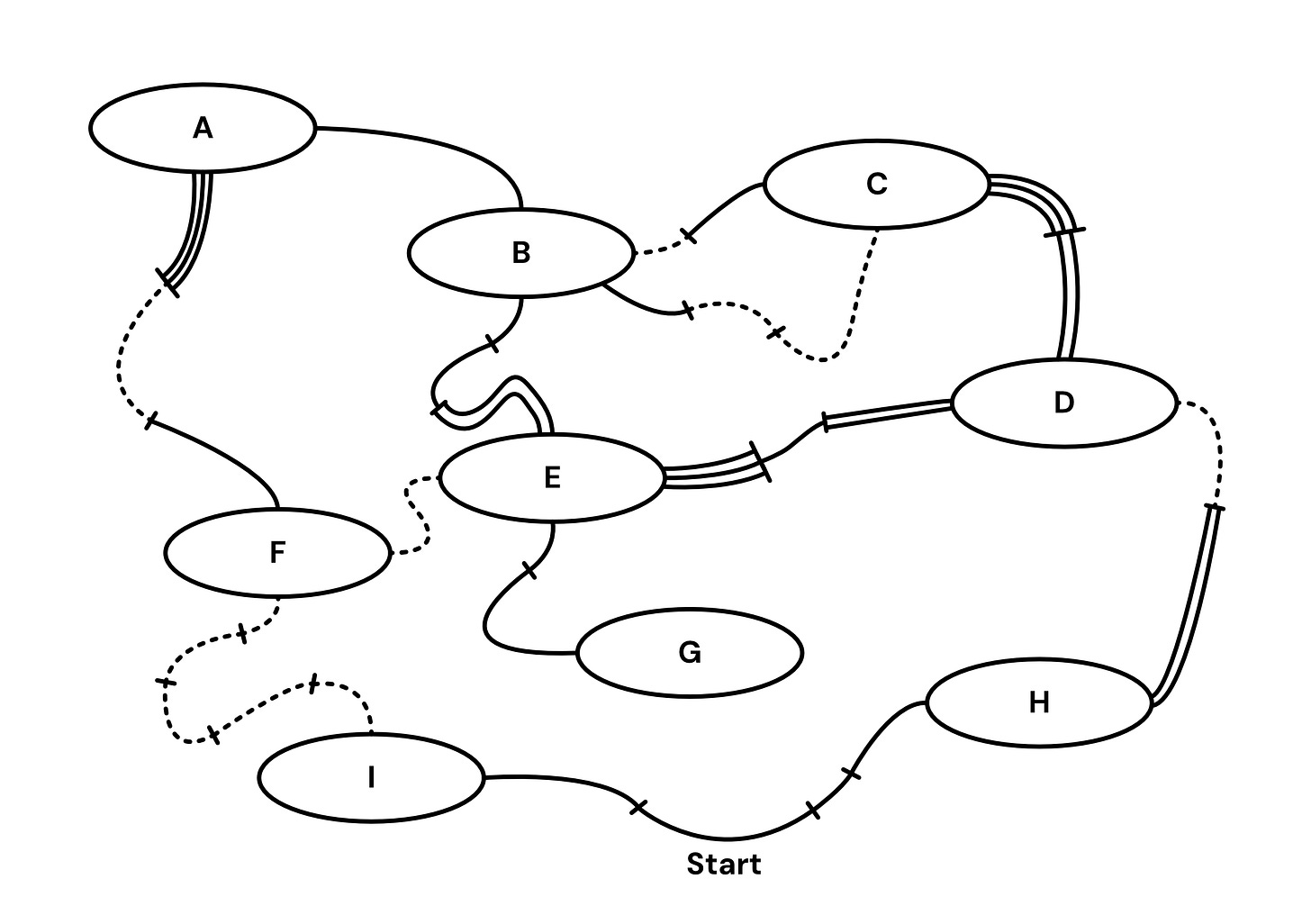This article contains affiliate links, meaning I get a commission if you make purchases using these links, at no cost to you.Last week we mapped caves that your players are going to have to squeeze through. There’s two major risk factors in caving that we didn’t cover: flooding and falling debris. These are perfect for ratcheting up the tension. Let’s work them in.
Rocks fall, everyone dies
Rockfalls can go in an encounter table for your cave network. Include entries of different severities, from a 1d4 damage rockfall on a single party member all the way to a full cave-in. You might allow a dexterity check to half or avoid damage or other effects.
A cave-in can block a passage, and you could roll a d6 to see if it: (1-2) occurs behind the party - sealing off the way back, (3-4) on top of them - causing huge damage and getting buried alive, (5-6) in front of them - blocking the path ahead.
Players might think of ways to avoid or lessen these kind of encounters: tough helmets and specialist gear, hiring a guide, or structural support poles.
If you’re looking to stock your cave with semi-realistic objects from previous explorers, check out supplements like this one.
Flooding
Perhaps the pinnacle of a caving nightmare is a flood.
If you’re running Call of Cthulhu, an Elder God could send a tide to drown your investigators whilst they explore. Or if you’re running Mork Borg, a giant monster at the bottom could vomit the contents of its stomach, causing a slurry of body parts and digestive acid to start rising.
Keep rolling for weather whilst the party is in the cave system. If you roll a storm or something that would cause a deluge from the sky, a rising tide of dark water is going to consume the map.
There are two ways I know of caves flooding. The first is water passing from the surface into the cave entrances. Water passes through the cave system like a stream, which can gives characters a warning, filling the cave from the bottom up.
The second is when the ground water table changes. If it rises, the cave can flood from the bottom without any sign. This would give the characters no warning at all. Pick your desired level of cruelty.
In both cases, the lowest point is where the flood begins. Here is the start point in this cave system:
The water floods in both directions from the start point. Use your judgement as to whether some passages fill before others. For example, I would fill the two horizontal tunnels connected to D before filling the vertical one. Each area connected takes a number of dungeon turns to flood according to the following:
Cavern: 3 turns
3 line path: 3 turns.
2 line path: 2 turns.
1 line path: 1 turn.
Dashed line: Roll a d6. On a 1-3, it floods instantly, move onto the next segment immediately. On a 4-6, it takes 1 turn.
After 2 dungeon turns, the flooding looks like this:
Indicate flooding with an exterior pencil mark. If an area is partially flooded, fill the appropriate portion (e.g. a third for the first turn of a cavern). Use a pencil so you can erase it later.
A flooded zone is not traversable by normal means ~unless you are playing a modern setting with diving gear where the limitation is really about oxygen supply~
If characters get caught in the flood, use rules for drowning in whatever system you are using. As rule of thumb, 90 seconds until unconsciousness, 10 minutes until death.
To determine how much of the cave fills with water, roll a d100 and fill roughly that percentage of the cave by eye. You could even do this the first time the party enters the cave and pre-fill it with water. I’d roll d6 days for the time it takes to drain.
Players can mitigate the flooding risk by paying close attention to the weather, picking their time of entry, and not lingering.
Note: This system also works for a gas leak in a mine, choose a source point in the cave and fill it up with something toxic.
Wrap up
This takes the caving mechanics outlined last week and dials up the tension (consider using silence to build more tension too). Flooding in particular presents a morbid path to a TPK, but is a risk that feels appropriate to a caving scenario.
What do you think of this flooding mechanic? Come tell me on the discord.
If you like this article please like and share! Commenting helps out MurkMail a lot and I love chatting with you folks.
If you are looking for how to approach keying/preparing a cave network, check out this article I did on pointcrawls, it’s applicable here. For running it, go here. And if you want a notebook designed for making hexcrawls and dungeons to make one of these cave systems in check my hexbooks.
Recommendations
YouTube: JP Coovert is one of my favourite rpg YouTubers at the moment, for both his positivity and artistic talent. He just put out a video on what makes a good starter adventure, which cut to the point and gave a sneak peak of the starter adventure for one of his upcoming projects Star Borg. Well worth a watch.
Kickstarter: Christian Eichhorn, maker of fine modules for Mork Borg and Cy_Borg (and others), has launched crowdfunding for Xenophilia - a Death in Space module. I’ve backed this one myself. After reading Christian’s other Death in Space supplement - Derelict - it was a no-brainer.







I haven’t used a cave setting before, but these suggestions (while terrifying) make me want to try one! The flooding mechanic is really clever and adds real consequences to a cave exploration.